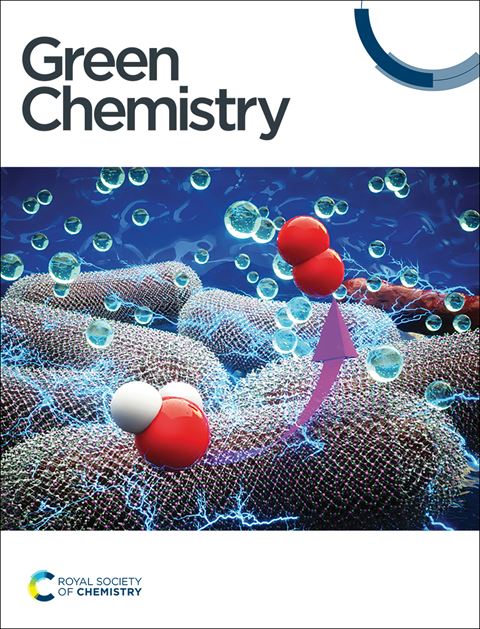Recovery and reuse of homogeneous palladium catalysts via organic solvent nanofiltration: application in the synthesis of AZD4625†
IF 9.3
1区 化学
Q1 CHEMISTRY, MULTIDISCIPLINARY
引用次数: 0
Abstract
Homogeneous catalysts are frequently used in the pharmaceutical industry but suffer from problematic separation from the reaction mixture and subsequent reuse. As an alternative to traditional separation methods like distillation and extraction, organic solvent nanofiltration (OSN) shows great potential to address the challenge of efficiently recovering and reusing homogeneous catalysts, without high energy usage and cumbersome biphasic separation. Here, we demonstrate the effective recovery of homogeneous palladium catalysts from the reaction mixture using commercial OSN membranes in a real pharmaceutical manufacturing case study to synthesize AZD4625, without altering the existing catalyst/ligand system. Despite the inherent challenges, the recovered catalyst and ligand were successfully reused up to five times, maintaining high conversion of over 90%. Furthermore, life cycle assessment shows that the sustainability of the process could be further enhanced by using greener bio-derived solvents and implementing solvent recovery to reduce solvent consumption.

有机溶剂纳滤法回收和再利用均相钯催化剂:在合成AZD4625†中的应用
均相催化剂经常用于制药工业,但从反应混合物中分离和随后的重复使用存在问题。作为传统分离方法如蒸馏和萃取的替代方法,有机溶剂纳滤(OSN)在解决高效回收和再利用均相催化剂的挑战方面显示出巨大的潜力,而无需高能耗和繁琐的双相分离。在这里,我们展示了在不改变现有催化剂/配体体系的情况下,使用商业OSN膜从反应混合物中有效地回收均相钯催化剂来合成AZD4625。尽管存在固有的挑战,回收的催化剂和配体成功地重复使用了多达5次,保持了90%以上的高转化率。此外,生命周期评估表明,通过使用更环保的生物衍生溶剂和实施溶剂回收来减少溶剂消耗,可以进一步提高该过程的可持续性。
本文章由计算机程序翻译,如有差异,请以英文原文为准。
求助全文
约1分钟内获得全文
求助全文
来源期刊

Green Chemistry
化学-化学综合
CiteScore
16.10
自引率
7.10%
发文量
677
审稿时长
1.4 months
期刊介绍:
Green Chemistry is a journal that provides a unique forum for the publication of innovative research on the development of alternative green and sustainable technologies. The scope of Green Chemistry is based on the definition proposed by Anastas and Warner (Green Chemistry: Theory and Practice, P T Anastas and J C Warner, Oxford University Press, Oxford, 1998), which defines green chemistry as the utilisation of a set of principles that reduces or eliminates the use or generation of hazardous substances in the design, manufacture and application of chemical products. Green Chemistry aims to reduce the environmental impact of the chemical enterprise by developing a technology base that is inherently non-toxic to living things and the environment. The journal welcomes submissions on all aspects of research relating to this endeavor and publishes original and significant cutting-edge research that is likely to be of wide general appeal. For a work to be published, it must present a significant advance in green chemistry, including a comparison with existing methods and a demonstration of advantages over those methods.
 求助内容:
求助内容: 应助结果提醒方式:
应助结果提醒方式:


